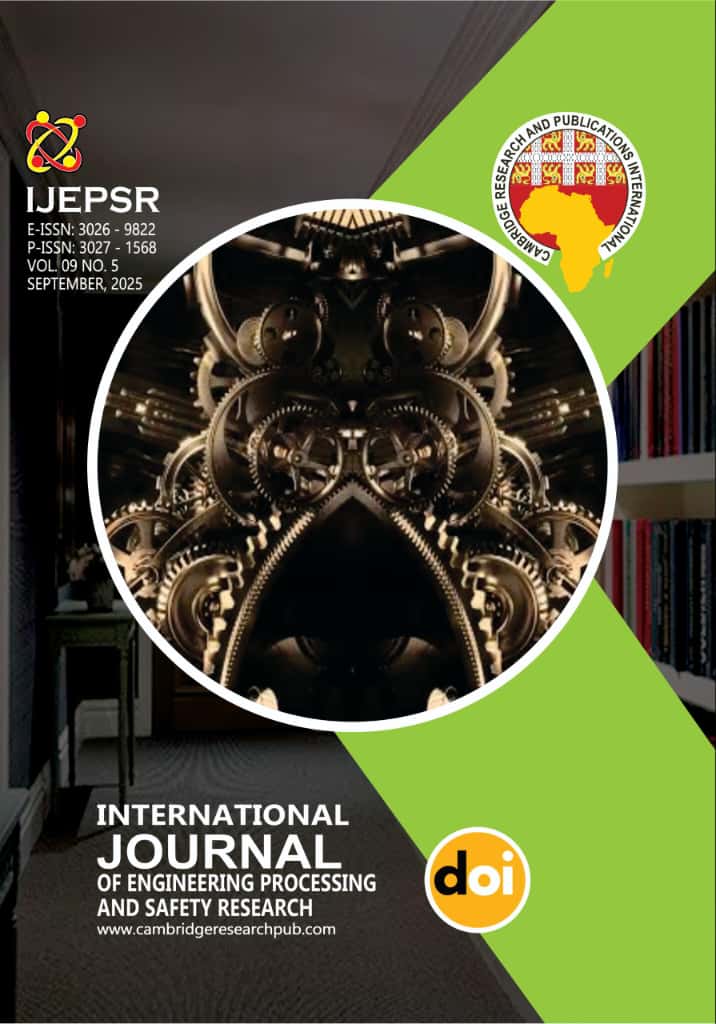DESIGN AND EVALUATION OF A LOW-COST MANUAL PAINT MIXING MACHINE FOR SMALL-SCALE INDUSTRIES: EFFICIENCY AND USABILITY PERSPECTIVE
Main Article Content
Abstract
In small-scale paint production industries, the reliance on manual methods for mixing paint often results in inconsistencies, extended mixing times, and excessive operator fatigue. This study presents the design, fabrication, and evaluation of a low-cost, manually operated paint mixing machine tailored to the needs of small-scale users. The machine integrates a crank-powered system, a cylindrical mixing drum, and cross-shaped internal blades mounted on a central shaft, all supported on a mild steel frame. The primary objective was to assess the efficiency and usability of the machine using measurable parameters such as mixing time, blade uniformity index, operator fatigue level, and user satisfaction. Materials such as mild steel, galvanized iron, and stainless steel were selected based on durability, cost-effectiveness, and corrosion resistance. The machine was tested using three different viscosities of paint, with results showing an average mixing time of 9.2 minutes per 5-liter batch and a uniformity index of over 88%, which is satisfactory for most commercial applications. A usability assessment involving 20 participants indicated high ratings in ergonomics, safety, and ease of operation, with over 85% of respondents recommending the design for micro-enterprises. The torque required for mixing and efficiency output validated the mechanical advantage of the hand crank, suggesting potential for scalability. The total cost of fabrication was estimated at ₦23,400, making it significantly more affordable than electric mixers commonly unavailable to low-income operators. The system also offers flexibility for indoor and off-grid usage, reinforcing its sustainability and alignment with circular economy goals. The outcome of this study demonstrates that an ergonomically sound, manually operated mixing machine can significantly improve productivity and paint quality while remaining accessible to users with limited financial resources. It bridges the gap between artisanal processes and modern efficiency, with potential for wider adoption across emerging economies. Recommendations for future improvements include integration of a geared crank system, development of larger capacity variants, and multilingual manuals for broader accessibility. This innovation presents a vital tool for economic empowerment, particularly within local paint production clusters in developing regions.
Downloads
Article Details
Issue
Section

This work is licensed under a Creative Commons Attribution 4.0 International License.




